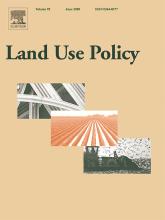Resource information
Oil palm plantations in Indonesia have been linked to substantial deforestation in the 1990s and 2000s, though recent studies suggest that new plantations are increasingly developed on non-forest land. Without nationwide data to establish recent baseline trends, the impact of commitments to eliminate deforestation from palm oil supply chains could therefore be overestimated. We examine the area and proportion of plantations replacing forests across Sumatra, Kalimantan, and Papua up to 2015, and map biophysically suitable areas for future deforestation-free expansion. We created new maps of oil palm plantations for the years 1995, 2000, 2005, 2010 and 2015, and examined land cover replaced in each period. Nationwide, oil palm plantation expansion occurred at an average rate of 450,000hayr−1, and resulted in an average of 117,000hayr−1 of deforestation, during 1995–2015. Our analysis of the most recent five-year period (2010–2015) shows that the rate of deforestation due to new plantations has remained relatively stable since 2005, despite large increases in the extent of plantations. As a result, the proportion of plantations replacing forests decreased from 54% during 1995–2000, to 18% during 2010–2015. In addition, we estimate there are 30.2 million hectares of non-forest land nationwide which meet biophysical suitability criteria for oil palm cultivation. Our findings suggest that recent zero-deforestation commitments may not have a large impact on deforestation in Sumatra, where plantations have increasingly expanded onto non-forest land over the past twenty years, and which hosts large potentially suitable areas for future deforestation-free expansion. On the other hand, these pledges could have more influence in Kalimantan, where oil palm driven deforestation increased over our study period, and in Papua, a new frontier of expansion with substantial remaining forest cover.


